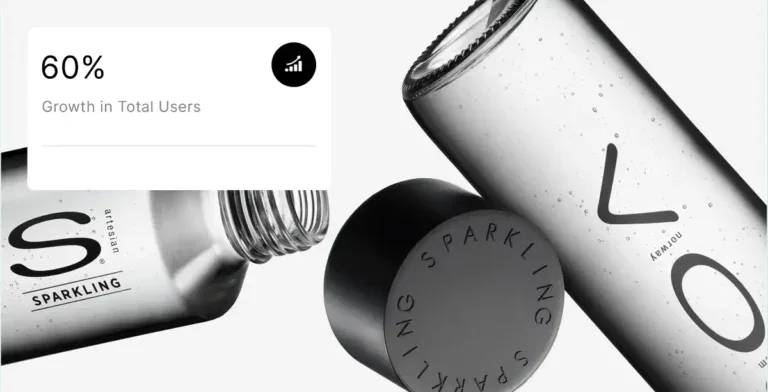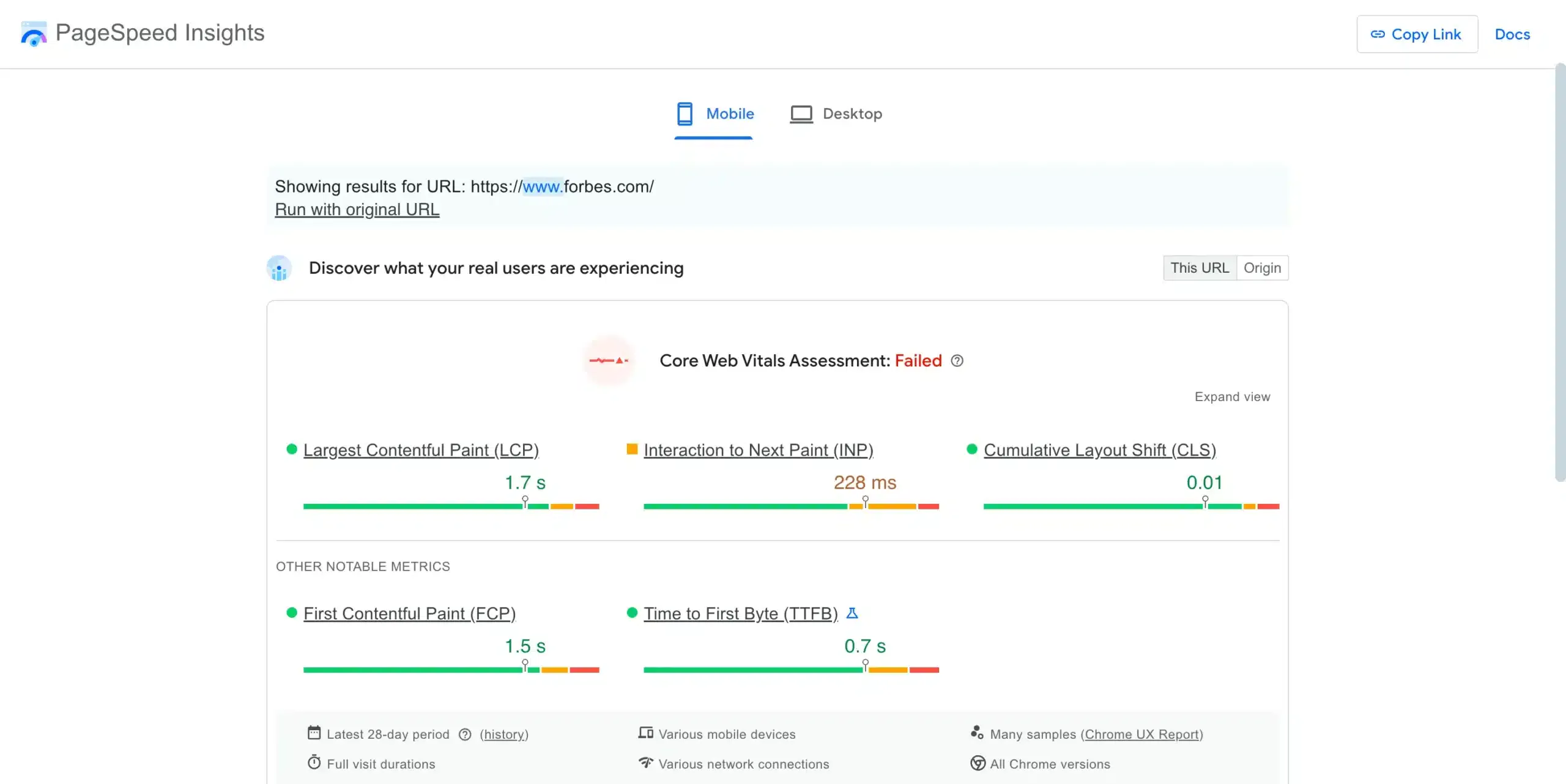Your website visitors won’t wait around.
A shocking 53% of them will leave your law firm’s website if it takes more than 3 seconds to load. This means that the website speed for law firms has never been more important.
This fact should make you usit up and take notice.
Google’s research shows something even more concerning: bounce rates shoot up by 90% when pages take 5 seconds to load instead of 1. The numbers get worse at 6 seconds with a 106% increase, and they skyrocket to 123% at 10 seconds.
Chicago law firms lose potential clients and marketing dollars because of slow websites. The legal market is fiercely competitive, with 430,000 firms and 1.3 million active lawyers across the U.S. That’s why the overall impact of the website speed of law firms can determine their success online.
Google pays attention to speed, too. Fast websites climb higher in rankings.
Yet most sites struggle. Slow law firm websites end up with higher bounce rates, fewer conversions, and poor search visibility.

Worry not, there are great ways to increase your website’s speed. Getting load times under 3 seconds is both achievable and necessary. Optimize images, use smart caching, and check performance often. Your site can turn visitors into clients with these steps.
This piece shows tested methods to speed up your Chicago law firm’s website. You’ll improve your website’s user experience and boost search rankings.
Looking to revamp your law firm website but don’t know where to start? We can help.
Why Website Speed for Chicago Law Firms Matters
Your law firm’s bottom line depends on website load time. Potential clients make their first impressions in just 50 milliseconds. This quick judgment often determines if they’ll trust your firm with their legal matters.
How slow sites affect client trust
Law firms must make strong first impressions. Slow websites create friction that damages client relationships before they start. Delays make visitors question your firm’s professionalism.
They think, “If they can’t maintain a functional website, how will they handle my complex legal case?”
Trust erodes almost immediately.
How search rankings and visibility suffer
Google considers site speed a crucial ranking factor. Desktop search rankings have included load times since 2010, and mobile speed became equally crucial in 2018.
Search engines reward websites that provide excellent user experiences.
Slow law firm sites face two penalties: lower search rankings and crawlability problems. Google’s bots can’t properly index content on slow pages, which means your legal content might stay hidden from search results.
Key Fixes to Improve Law Firm Website Speed
Your law firm’s website load times will improve with these technical enhancements. Here are the quickest ways to optimize your site’s speed.
Compress and convert images to WebP
Large images can substantially slow down your website and negatively impact search rankings.
WebP format is the top choice for modern image optimization. It has smaller file sizes while keeping quality high. These images are 25-34% smaller than JPEGs and 26% smaller than comparable PNGs, while keeping their visual appeal intact.
Your law firm’s site needs these steps to implement WebP:
-
Compress existing images using TinyPNG or ImageOptim before conversion.
-
Use online converters or WordPress plugins to convert compressed images to WebP format.
-
Keep fallback JPEG versions ready for older browsers that don’t support WebP.
Use lazy loading for media files
Lazy loading stops your site from loading all images at once. Users see images only as they scroll down to them. Law firm websites usually have many attorney photos, practice area images, and testimonial videos. Lazy loading helps these sites load their initial pages much faster.
Width and height attributes prevent layout shifts during image loading. Images that are visible right away should load quickly. This helps avoid delays in showing important content.
Minify and combine CSS and JavaScript
Minification reduces the size of code files. It takes out unnecessary characters, whitespace, comments, and line breaks. Small reductions add up quickly across multiple files.
Law firm websites load faster with minified CSS, HTML, and JavaScript files. Plugins like W3 Total Cache and tools like Minify Code simplify this. They have specific minifiers for CSS, HTML, and JavaScript.
Enable browser caching and GZIP compression
Browser caching stores files like HTML, CSS, JavaScript, and images on your visitors’ devices. Returning clients’ browsers use these cached files instead of downloading them again. This feature helps potential clients who visit multiple times before they contact your firm.
Browser caching needs expired headers that tell browsers how long to store different file types. You can cache static resources like images, CSS, and JavaScript files for longer periods.
GZIP compression reduces file sizes even further—up to 70% for smaller files and 90% for larger ones. Text-based files like HTML, CSS, and JavaScript work best with this lossless compression method. You can enable GZIP through WP-Optimize plugins or by adding configuration code to your .htaccess file.
Optimizing for Mobile and Local Users
Mobile users now make up over 63% of all website traffic to law firm sites. Your potential clients often look for legal assistance while on the go. Mobile optimization has become essential for Chicago law firms.
Make your site responsive across devices
Responsive design makes your website work well on different screen sizes, such as desktop monitors and smartphones. Your site will automatically adjust to the viewer’s device instead of needing separate mobile versions. Law firms gain several advantages from this approach:
Your sites stay consistent on all devices. Clients get the same content, whatever device they use to access your site. Clients switch devices when they research before a consultation. So, consistency is key.
Google now uses the mobile version of websites for ranking and indexing. A responsive design will boost your local SEO efforts and help you rank better in search results. This leads to more clients asking about your services.
Improve mobile load times with AMPs
Accelerated Mobile Pages (AMP) technology cuts down page load times on mobile devices. Law firms can use AMP to strip down HTML and utilize streamlined CSS.
Pages load almost instantly. This is a big deal, as it means that users stay longer on your site – research shows they start leaving websites after 2.75 seconds.
Use location-aware CDNs for Chicago-based traffic
Chicago law firms serving local clients can use Content Delivery Networks (CDNs) to cache their websites on nearby servers. This works great for firms with multiple offices or those serving clients throughout the metropolitan area.
Local CDN setup gives Chicago-based visitors faster load times compared to distant servers. Your target market gets a smooth browsing experience that builds trust with potential clients in your area.
Maintaining Speed With Regular Audits
Audits to know the website speed for law firms is the foundation of ongoing site performance. Your law firm needs to keep these improvements. So, monitor them regularly after you implement the speed upgrades. A 2022 study showed that all but one of these top law firms had broken links, with an average of 225 non-functioning links per site. Performance problems become systemic over time without proper maintenance.
Want to redesign your law firm website but don’t know where to start? We can help.
Run monthly tests with PageSpeed Insights and GTmetrix
Your website optimization needs continuous attention. PageSpeed Insights is an important tool. It explains the metrics Google uses to measure webpage performance.
This free tool checks your site on mobile and desktop. It gives you a detailed report with four key sections: performance, accessibility, best practices, and SEO.
Your testing should go beyond the homepage. The core team should analyze landing pages, practice area pages, and blog posts to spot potential risks throughout your site. This strategy reveals problems that might stay hidden behind a well-optimized front page.
GTmetrix works as an excellent complement to PageSpeed Insights. This tool provides a clear summary of page performance. It includes detailed metrics such as:
-
Lighthouse metrics and audits.
-
Web Vitals (LCP, TBT, CLS)
-
Real User Metrics.
-
Waterfall charts and speed visualization.
GTmetrix stands out with its performance tracking capabilities. The tool tests your pages on a schedule, monitors historical trends and alerts you to performance dips. This feature helps you gain insights. Websites often slow down over time. This can happen due to updates in content management systems or the buildup of large files.
Fix broken links and remove unnecessary redirects
Broken links create substantial performance issues beyond user frustration. They represent the most common crawl errors that occur when search engine crawlers encounter 404 Page Not Found errors.
Google lowers your rankings in search results if it finds too many broken links. This signals that your website may be unreliable and outdated.
Page load time increases with each redirect as processing takes time. Redirect chains can cause problems. When one URL redirects to another, it can lead to a long sequence. This drains performance. Search engines penalize slow-loading pages, making redirect chain elimination crucial.
Semrush’s Site Audit and Google Search Console help identify broken links. Schedule weekly audits instead of relying on manual checks. The work to be done after finding broken links includes:
-
Updating URLs for pages that still exist.
-
Removing dead links entirely.
-
Creating 301 redirects to relevant new pages.
Linking directly to final destinations cuts down load times. So, skip redirected links as internal links on your site. This simple change improves overall site speed substantially.
Get a Fast Loading Custom Website for Your Law Firm With Blacksmith
Website speed for law firms is vital if you want to stand out in Chicago.
If you want to thrive and get new clients consistently, you NEED a well-made website. This article covered what you need to speed up your website.
However, getting it fast takes time. So what now?
This is where we come in.
Here at Blacksmith, we’re website experts ready to get your website well under the 3-second mark.
As a law firm web design agency, we have a group of professionals ready to optimize and improve your website in record time.
Say goodbye to losing clients due to your slow website.
Unsure if investing in a custom website is what your brand really needs? Click here to schedule a call with us and we’ll audit your website and show you all the things that are making you lose clients right now.










